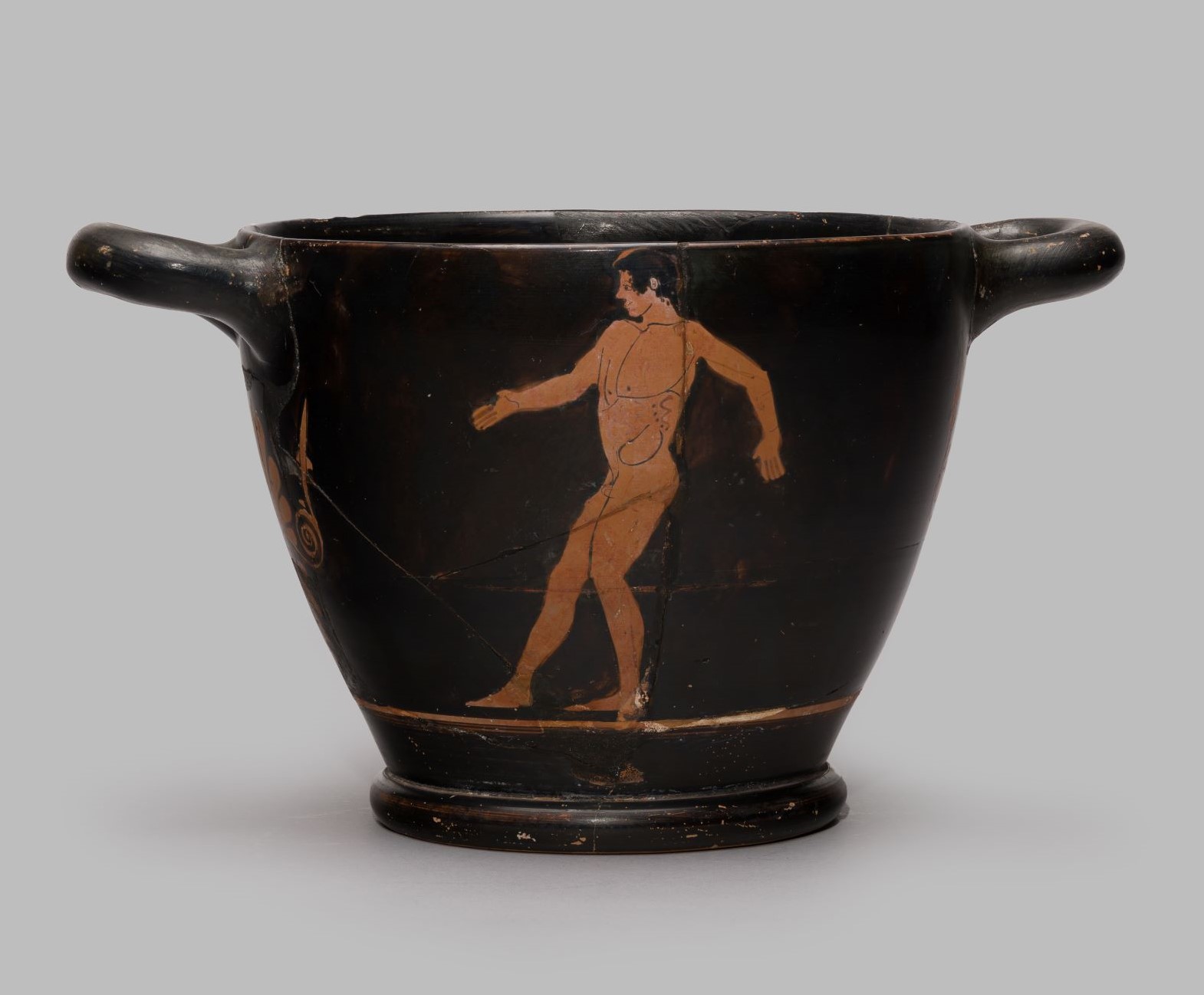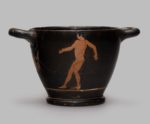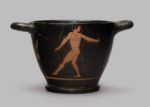
Skyphos [Gr21]
Athenian Red-Figure, by the Painter of Louvre CA 1849, c. 450 BC
Painted terracotta (h. 15.3 cm, w. 27.5 cm), mended and restored
Two athletes, one on each side of the handles. Palmettes below each handle.
The figures on the exterior of this drinking cup are recognisable as athletes because of their nudity. Athletes were often depicted on vessels intended for use at the symposium, an elite all-male drinking party. Physical fitness and the appearance of the body were central preoccupations in Greek culture, and many of the wealthy citizens who attended the symposium would have spent time training in the gymnasium.
Although the figures on this vase are quite roughly drawn, they show clearly the interest in torsion and movement characteristic of red-figure painting in the middle of the 5th century. Musculature is defined by fine black lines on the torso, and on the legs by fainter lines made from more diluted clay. While the drawing is not anatomically precise, it gives a clear sense of the athletes’ bodies pulled and twisted by the poses they have adopted.
Literature: J. Falconer and T. Mannack, Corpus Vasorum Antiquorum: Great Britain, Fascicule 19: Winchester College (Oxford, 2002), p. 8, plate 7.1-2; J.D. Beazley, Attic Red-Figure Vase-Painters 2nd edn. (Oxford, 1963), p. 979.4; Winchester College Memorial Buildings: Department of Classical Art (Winchester, 1909), p.21 (no. 67)
Exhibited: Winchester Discovery Centre, July-August 2012
Provenance: From Athens, at Winchester College by 1909
Location: Treasury, Gallery 3

